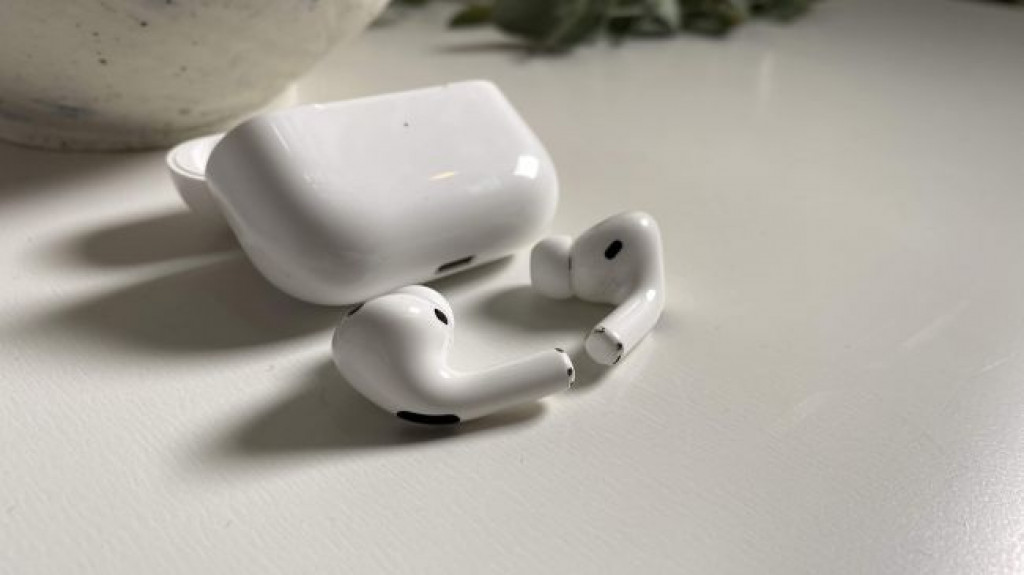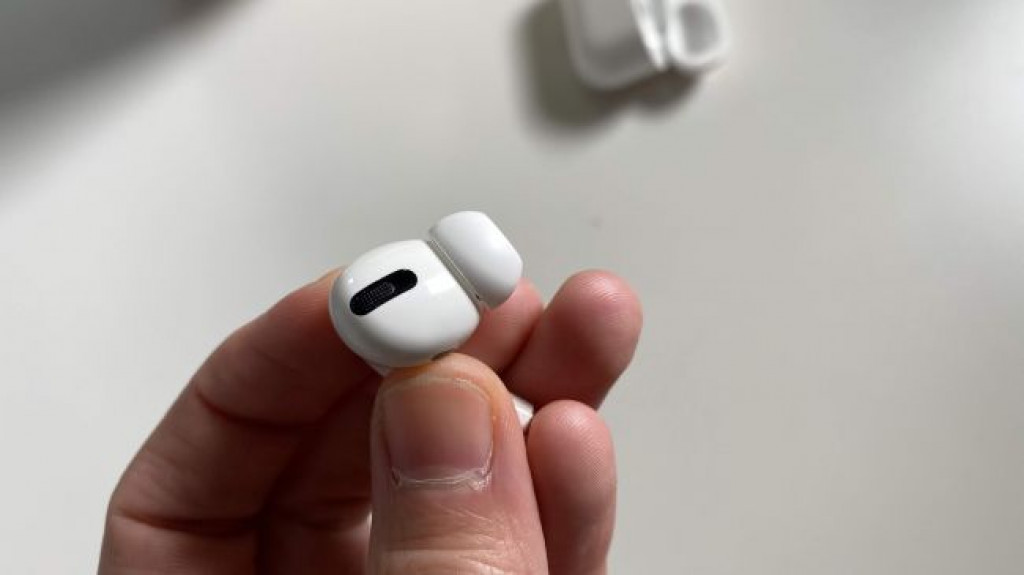
EARLY VERDICT
The new AirPods Pro have already impressed in a number of ways in our early testing – we need to spend more time assessing them, but already the Pro earbuds feel like a marked step up over the original AirPods.
FOR
- Noise cancellation
- Excellent Transparency pass-through mode
- Much better fit
AGAINST
- Higher price
- Capacitive controls fiddly
- USB-C charging cable in box
The new Apple AirPods Pro true wireless earbuds have landed, bringing active noise cancellation, a (finally) much better fit, and an improved design, in a bid to lure more iPhone users into the true wireless fold.
Apple’s latest buds are a lot more expensive, with the AirPods Pro costing far more than the AirPods 2 that launched in 2018, and even more than the Powerbeats Pro.
However, while the price is higher, you are getting earbuds that have been redesigned from top to bottom, and with far more useful features in the mix – so how do they fare in real-world use in our early test?
AirPods Pro release date and price
The Airpods Pro release date is 30 October worldwide – so the gap between them being announced and you being able to buy them from an Apple Store is much shorter than normal.
The important thing to note here is that the AirPods Pro are not a replacement for the 2019 AirPods model… and that’s reflected in the price point.
You can order the AirPods Pro for $249 / £249 / AU$399 – which is a considerable hike over the 2019 AirPods’ $159 / £159 / AU$249 (with the standard charging case), and even the $199 / £199 / AU$319 with the AirPods’ Wireless Charging Case bundled in.
Initial setup

Like so many other Apple devices, the AirPods Pro instantly connect to your iPhone or iPad – you simply need to open the case to get going.
Well, we say ‘simply’ – you’ll need to make sure that iOS 13.2 is downloaded to your device so you can get, in Apple’s words, “all the advanced features” on offer – what these advanced features are is unclear (perhaps the new volume control options in Control Center), but continuing with ‘limited features’ didn’t seem appealing.
Once activated, the AirPods Pro will be automatically paired with your phone and all Apple devices linked to your iCloud account (including Apple Watch, iPad and Macs), so you won’t need to keep having to pair your new buds.
Once you’re in, heading into the Bluetooth settings will assess your fit, checking whether the earbud tips you’ve chosen (whether that’s small, medium or large – medium is the default) are creating the right seal.
This is achieved by the playing of a short piece of music, and the AirPods Pro microphones internally assessing whether this sounds as it should – if you’re like most people and get a good fit, you’re given the green light (or green lettering, to be more precise).
This writer’s ears are just terrible when it comes to having most kinds of earbuds fall out, and we achieved a good fit straight away, with the AirPods Pro feeling like they were in no danger of detaching from the ol’ head holes easily; in headphones-reviewing world, we call that a plus.
Design and use

The first thing we noticed in our early test is that the AirPods Pro are light – they’re so light that, once plopped into the ears, it’s hard to tell that they’re actually there. While this lightness is a plus in terms of comfort, it could be a minus in other ways – we could easily imagine a situation where you lose one, and don’t actually realize for a while that it’s not there (except that your music would have stopped playing).
The stems are much shorter than on the Airpods 2, and where you were able to tap the previous earbuds in order to skip tracks or activate Siri, the fit of the AirPods Pro means that would be a less comfortable experience here.
Instead, there’s a ‘capacitive force sensor’ in the stem, a small ridge on each stem of the AirPods Pro, which you squeeze to switch between noise canceling and Transparency mode (more on that soon), squeeze quickly to pause music, or ‘double squeeze’ to skip forward.
Initially this was a little tricky to get used to, as the shorter stems made it hard to find the ridge, but after a few minutes it became second nature – although as the buds are quite compact, it does feel a little like you’re pulling them out your ear.
It’s a shame there’s not a haptic click, rather an audible one, to register the touch, as that would have made the new AirPods Pro feel so much more tactile. You can change what this squeezing the ridge does, setting it to control Siri, if you want, and you can assign a different function to each earbud as well.
We’ll tell you one thing that would have been awesome – touch-sensitive volume control on the stem. Straight away we were irritated by having to reach for the phone to do that – the Powerbeats Pro, for instance, have a clickable button to change the sound level and it’s really useful.
Switching between the tips in the box is, once again, very Apple – whether that’s a positive or negative thing depends on how you feel about the company. Rather than a silicon bud that you have to wiggle onto or off a small stem, these just click into place.
This allows the AirPods Pro to have a more compact design, and makes setting them up feel more premium… but we’re dreading to think how much a replacement tip might be. Where you can pick up new silicon tips for standard earbuds easily, here we can see a replacement being costly – even third-party alternatives – thanks to the little clips that hold them in place.
Getting the eartips on and off feels a little fiddly – they don’t snap off instantly, and require a little bit of force to remove. However, the system seems robust and once you gain the confidence to do so, it’s fairly easy – and it’s not like you’ll have to do it that often, if ever again.
Inside the AirPods Pro are an optical sensor and accelerometer, which means that when you pull a bud out of your ear or insert it back in, the music will stop and start accordingly.
Talking of which… the improvement in the fit of the AirPods Pro over the original AirPods is huge. The silicon buds lock them in place snugly, and the earbuds are so light that they don’t bounce around, even if you’re jogging down the road or charging up a flight of stairs at the train station.
In terms of design, Apple has made another, well, Apple product. The AirPods Pro are pricey, but they’re well engineered throughout, with little design tweaks and flourishes that really add to the overall experience.
Sound quality, noise cancellation and Transparency

It’s one thing to fit well, but how do the new AirPods Pro sound? Well, Apple is touting custom drivers, improved bass, “clear and detailed mid and high frequency” and an adaptive equalizer.
All together, this means that, yes, the AirPods Pro do offer great sound quality in our early tests. There’s a noticeable richness to the bass and clarity in the vocal sections when just listening to streamed music on Spotify, and even at half volume the sound level is perfectly adequate – the new AirPods Pro can go rather loud if you whack the volume right up.
Part of that sound quality is down to the noise cancellation, which is noticeable and strong when turned on – you turn it on by squeezing the capacitive stem of the AirPods Pro, or by heading into the volume section of your iPhone and swiping left (you can even toggle it on the Apple Watch, with a menu enabling you to turn the feature on and off).
Apple has placed two microphones in the AirPods Pro, allowing for both internal and external sound analysis.
The former will monitor the audio quality in the ear to see if the music that you’re playing sounds as it should, and alter it accordingly using an algorithm. The latter cancels out background sound, and creates a far more serene listening environment.
We can’t test how well this algorithm actually works, as there’s no way to turn it on and off – but the active noise cancellation has a strong and noticeable effect. It won’t shut out all other sound around you – if you’re in an office and there’s music playing, a small amount might still bleed through – but the AirPods Pro seem to offer a great way to shut yourself off from the world.
(One odd thing we did note: if you just have the AirPods Pro switched on, but with no music playing, a strange, hushed ‘wub wub’ sound can play, as it seems the noise cancellation is still working in the background. It’s a little disconcerting, and it doesn’t happen all the time at all, but it feels strange in the ear).
Transparency is the other end of the noise-canceling scale from Apple, with the microphones inside the AirPods Pro able to pass external sound through ably.
It’s well-implemented feature, with the world fading slowly in and out when Transparency is turned on, rather than a sudden dump of sound landing in your cranium. You can have a conversation with someone even with your music playing (although if you’re over half-volume it’s a little tricky), and when there’s no music playing you’re barely aware you’ve got headphones in at all.
The adverts make it seem like a simple brush of the capacitive stems on the AirPods Pro is all that’s required to turn on Transparency, where in actual fact it takes quite a forceful and prolonged touch.
Like we said earlier, it’s something you get used to quickly as an action, but it’s different from what we expected.
One thing we did find interesting: if you’re planning on using the AirPods Pro to take calls when out and about, you might find that you struggle when using noise cancelling.
This seems to be that one naturally lowers their voice when the sound is more encompassing, and this stops the microphones picking up your voice as strongly as they might.
Turn on Transparency and the world comes back to life, sonically, and you’ll find your automatically speak louder. However, in our preliminary tests, we found that we had to speak a little more clearly than usual when chatting to others over the phone with the AirPods in.
Battery and fitness

Early verdict
In our limited time with Apple’s AirPods Pro, we feel like we’ve quickly assimilated them into our daily routine. Some niggles presented quickly: no volume control on the buds themselves, and the clickable stem was a little odd to get used to.
But the active noise cancellation and Transparency modes were strong, the audio quality much higher (as you’d expect for the extra cost) and the overall design feels miles ahead of the original AirPods.
While you will pay a premium for them, already in our testing we’ve found that the new AirPods Pro offer a real meaty upgrade – the first AirPods pale in comparison, so if you’re willing to pay the extra we’re already getting the sense that it might well be worth it.
Source: techradar.com









































